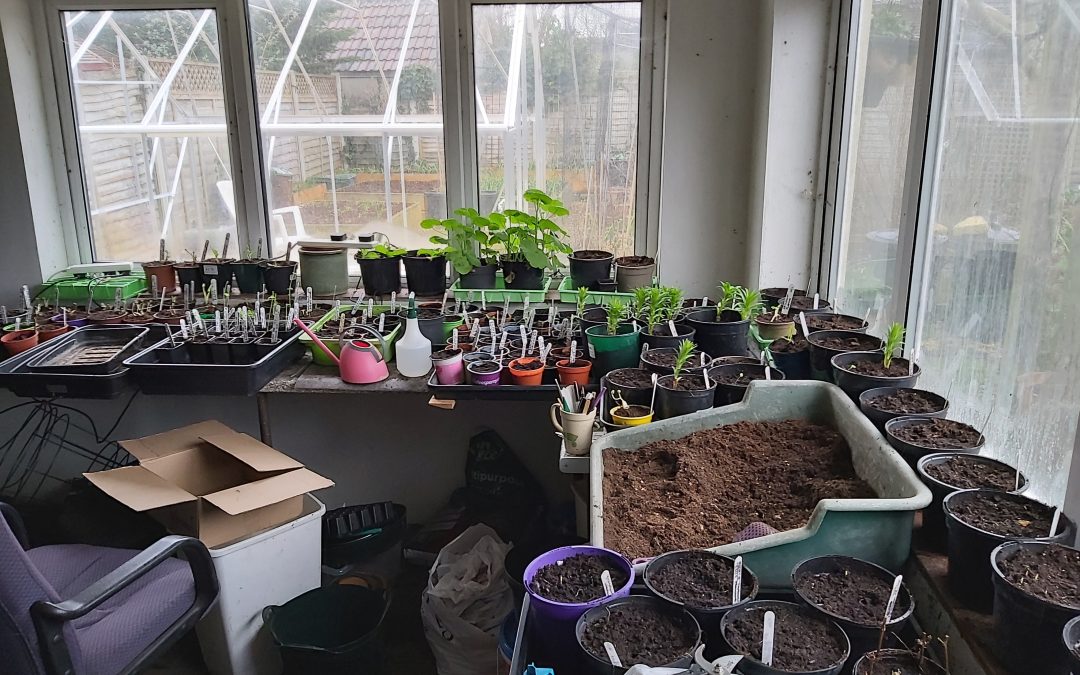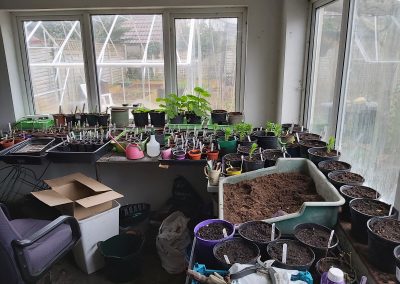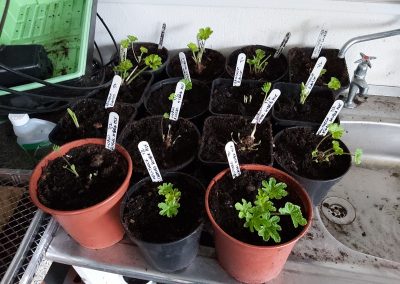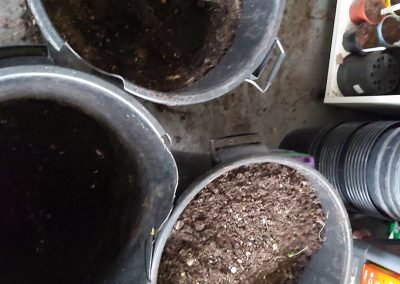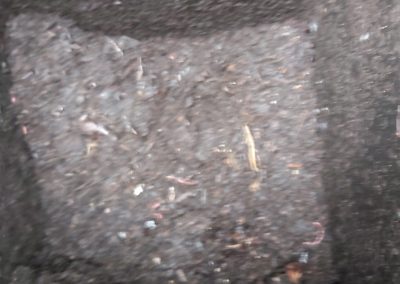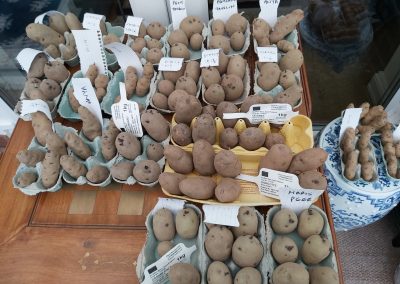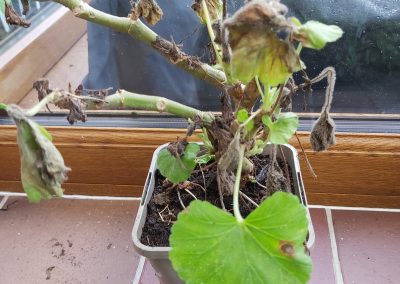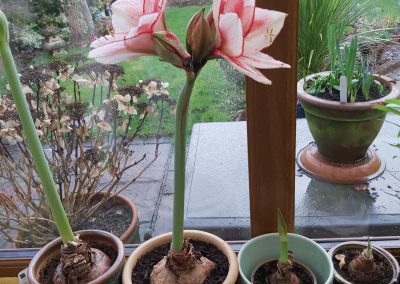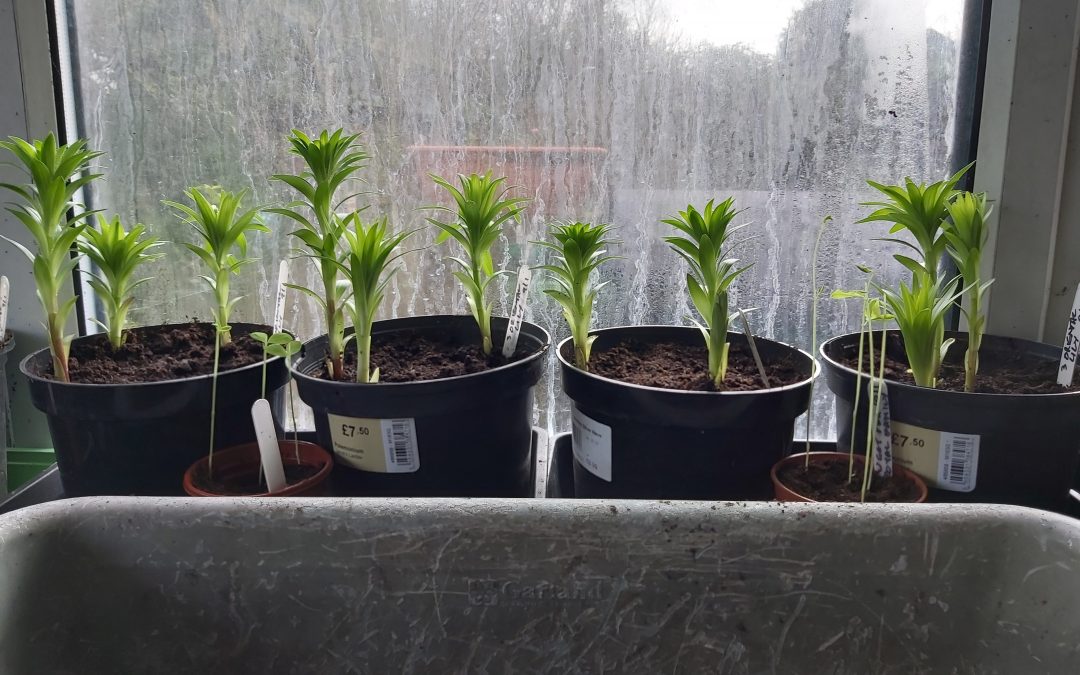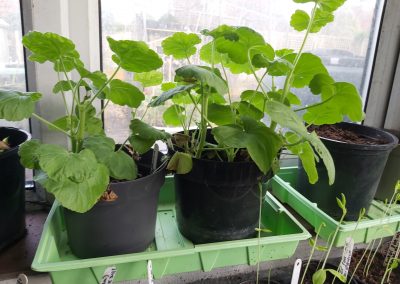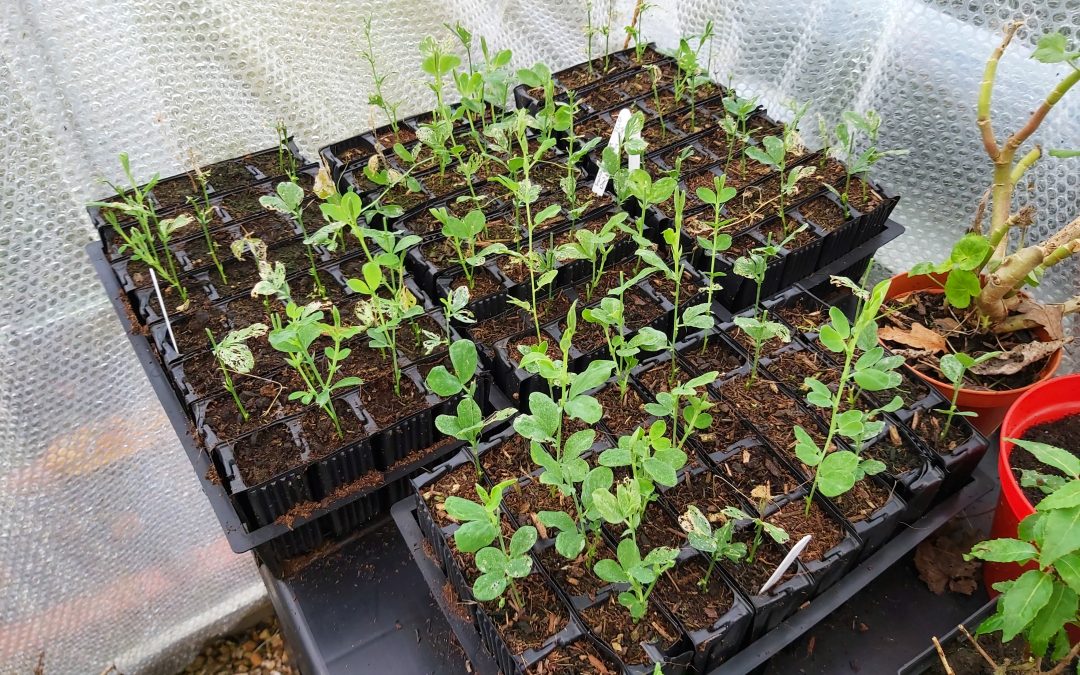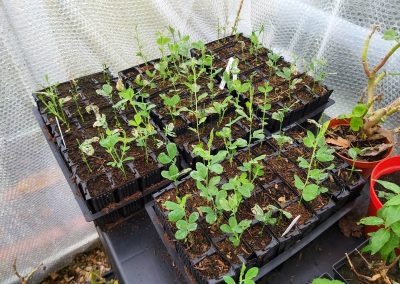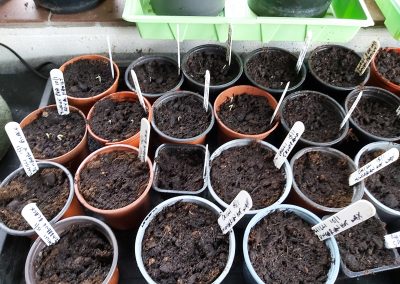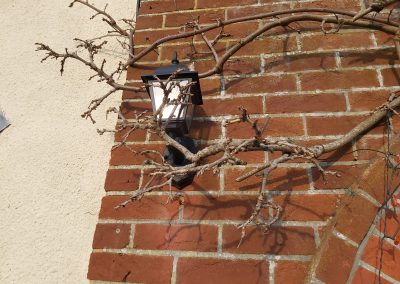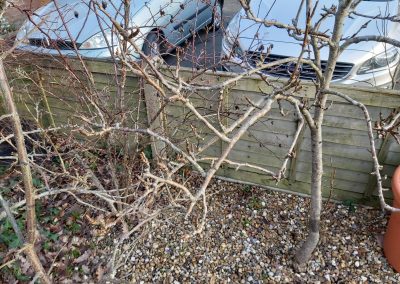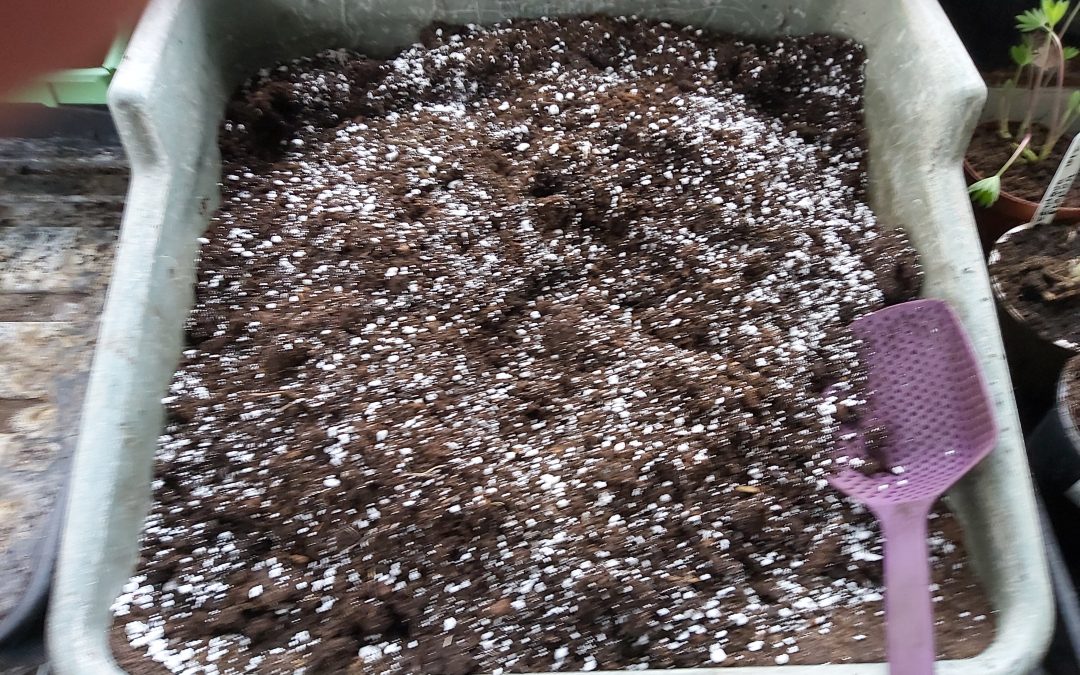
GARDENING DIARY 21st FEBRUARY 2021
Well, after all the frozen ground we had last week, this week’s weather has been so much better, so I have been very busy. With my new (unheated) greenhouse sorted (hurrah!), I have been moving some of the plants from my heated garden room, freeing up more space there for planting lots of seeds. I have already planted my chillies and sweet peas as you know, so this week I planted the tomatoes (11 different varieties – daft I know), and cucumber, as they both need bottom heat (I use heatmats). To get an early start, I also thinly planted spring onions and carrots, in shallow trench containers, so they can be simply plonked into position in the beds in a month or so, without disturbing the roots. Not on heatmats, but in the warm garden room. I also planted leeks, mint and chives, for pricking out later on. It’s still too early for beans/peas etc. Photo one shows the compost I used for planting, and includes about 30% Perlite, plus some sieved leaf mulch. As well as my various leaf and root cuttings, I will start my annual flowers off next week, including antirrhinum, petunia, pelargonium, alyssum, cosmos, marigolds etc. Very exciting stuff, spring is definitely coming!
I notice some of the garden birds have also started pairing up and looking for nesting sites, so now is a great time to both clean any boxes you may have, or add any new boxes (I have 5 already, 4 were occupied last year, and now adding 3 more). Remember to site 2-4m above ground, west or east (never south) work best down here, and sheltered if possible. 25mm holes for blue/coal tits, 28mm for great tits/tree sparrows, 32mm for house sparrows/nut hatches, and 45mm for starlings.
Finally, as previously promised, next Sunday (28Feb), I will leave some pre-chitted anya potatoes by my front door (64 Dudsbury Avenue, Ferndown, BH228DX). For those that want to enter the competition, please take one, and sign your name, so I know who is competing. You can pot it in a) a potato bag in early March b) in open ground at end of March. In June we will then dig them up, and weigh the potatoes, with a prize for the winner. If you can’t pick it up on Sunday 28Feb, please email me (kandpsteele@btinternet.com) for alternative arrangements.
So have a great time gardening, even if it is just a windowbox, because spring really is just round the corner!!
Kevin Steele
![Greenfingers Potting Compost[5362]](https://ferndownu3a.co.uk/wp-content/uploads/2021/02/Greenfingers-Potting-Compost5362-scaled.jpg)

